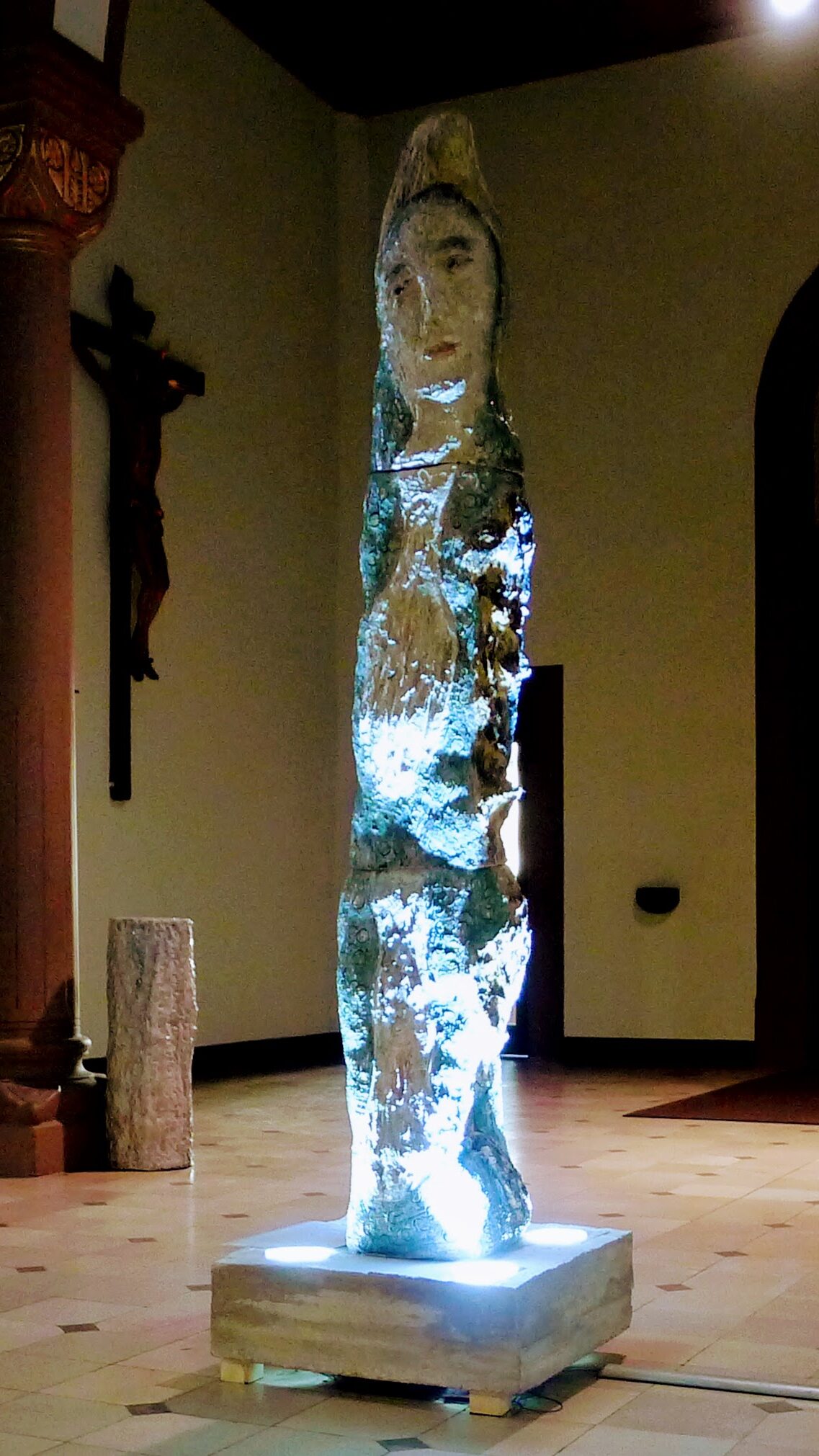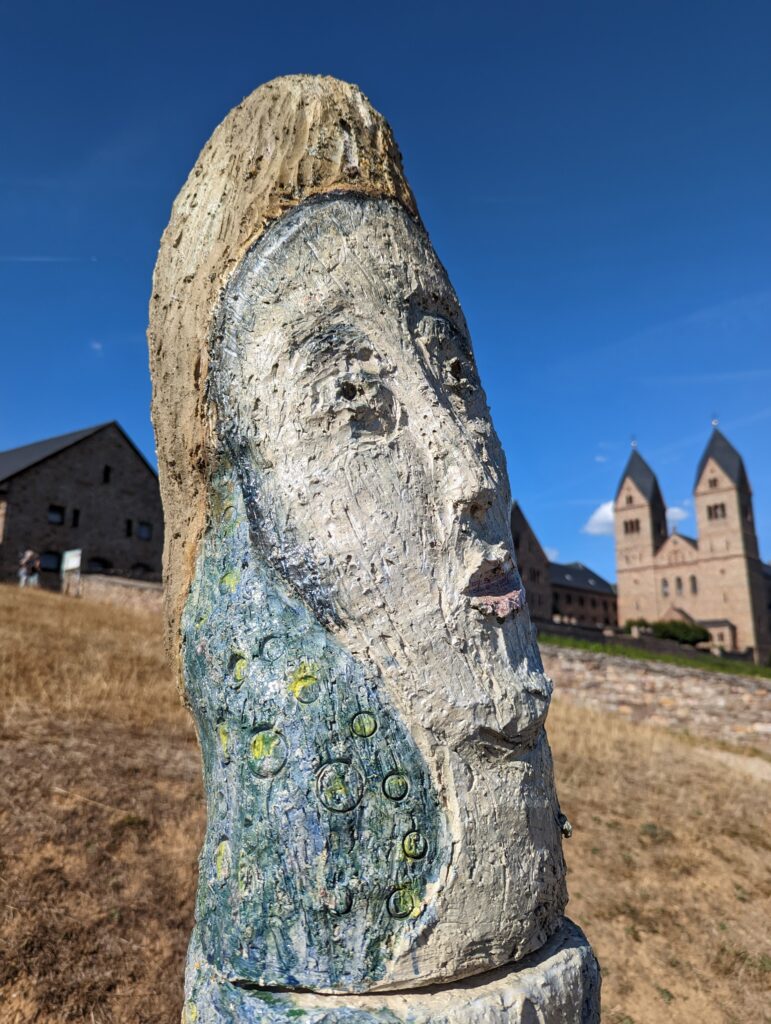Does a “patron saint” still hold relevance in the modern world?
Divine Inspiration or Human Genius: Who Deserves the Title of Patron Saint of Creativity?
The selection of a patron saint is a subjective process influenced by various factors, including historical context, theological interpretations, and popular opinion. Determining a patron saint for a specific concept like creativity is a complex process with no single, definitive answer. While there’s no official declaration by the Catholic Church, Hildegard of Bingen is widely considered the patron saint of creativity for several reasons:
Table of Contents
Her prolific creative output: Hildegard left behind a vast body of creative work, including:
- Visionary writings: Hildegard of Bingen documented her mystical experiences in books like “Scivias.”
- Theology: Hildegard of Bingen theological treatises, like “Liber Divinorum Operum (The book of divine works),” explored faith and spirituality with profound insight.
- Music: Hildegard of Bingen composed over 70 chants and hymns, characterized by haunting melodies and intricate rhythms.
- Art: Hildegard of Bingen’s illuminated manuscripts provide vibrant imagery, symbolizing her spiritual visions and theological ideas.
- Medicine: Hildegard of Bingen wrote extensively on natural remedies and healing practices, demonstrating her keen observation and understanding of the human body.
While Hildegard of Bingen is widely considered and revered as the patron saint of creativity, she hasn’t received that official patron recognition from the Catholic Church.

Hildegard of Bingen: A Case for Patron Saint of Creativity
Despite the lack of official patron status, Hildegard of Bingen’s influence on creativity remains undeniable. Her life, work, and visionary spirit continue to inspire artists, musicians, writers, and individuals across diverse disciplines. This widespread popularity and admiration serve as a testament to the enduring impact of her legacy and the profound significance of her role as a patron saint of creativity, regardless of official recognition.
Ultimately, the debate surrounding Hildegard’s official status as patron saint of creativity reflects the complex interplay between faith, history, and popular belief. While the formal process for canonization and recognition yielded official confirmation of sainthood on 27 May 2012; Hildegard’s legacy as a patron beacon of creativity and inspiration continues to shine brightly, transcending the boundaries of official pronouncements.

Seeking Inspiration and Guidance
Based on Hildegard’s teachings, creativity can be defined as:
1. A Divine Gift: Creativity is not solely a human invention, but rather a gift bestowed by God. It is a manifestation of the divine spark within each individual, allowing us to participate in the ongoing creation of the universe.
2. A Pathway to God: Engaging in creative pursuits can be a form of prayer and communion with the divine. By expressing ourselves through art, music, writing, or other creative endeavors, we connect with the beauty and wonder of God’s creation.
3. A Holistic Expression: Creativity encompasses not just artistic pursuits, but also the way we approach life itself. It manifests in our everyday actions, our choices, and the relationships we build.
4. A Force for Healing and Transformation: Creativity has the power to heal both ourselves and others. By expressing our emotions, experiences, and visions through art, we can find solace, release pain, and promote personal growth.
5. A Responsibility: With the gift of creativity comes a responsibility to use it wisely and for the benefit of others. We should strive to create beauty, inspire others, and contribute to a more just and harmonious world.
Key Principles of Hildegard’s Creative Process:
- Openness to Inspiration: Hildegard believed in the importance of being receptive to divine inspiration and guidance.
- Vision and Imagination: Her visions and vivid imagination played a central role in her creative process.
- Harmony and Balance: Hildegard emphasized the importance of balance and harmony in all aspects of life, including creativity.
- Connection to Nature: She believed that observing and interacting with the natural world was a vital source of inspiration.
- Expression Through Diverse Forms: Hildegard embraced a variety of creative mediums, including music, writing, and visual art.
- Faith and Spirituality: Her creativity was deeply rooted in her faith and spiritual beliefs.
By understanding and embracing these principles, we can gain a deeper appreciation for Hildegard’s definition of creativity and find inspiration for our own creative endeavors.

